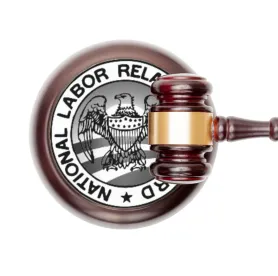The National Labor Relations Board (Board) announced on June 21, 2022, that it intends to engage in rulemaking with respect to several subjects. One of those which was revealed to be a subject of rulemaking was joint-employer status under the National Labor Relations Act (Act).
Any changes in the joint employer standard employed by the Board are relevant to businesses across the country because it could create liability under the Act for a business which does not have any statutory employees on its payroll. Joint employer status is a theory of liability the Board uses to hold businesses liable for any unfair labor practices committed by a second business with whom the first business is a “joint employer.” Additionally, a finding of joint employer status can create bargaining obligations for a business where before it had no such bargaining obligation.
This is part of a recent flurry of activity by the Board significantly changing the joint-employer standards it will employ, following the Board employing generally the same standard for more than 30 years between 1984 and 2015, with slight modifications from time to time. The first change occurred via a Democratic-majority Board decision in 2015, Browning-Ferris, 362 NLRB 1599 (2015). This was followed a few years later by a Republican-majority Board engaging in rulemaking which resulted in Rule 103.40 of the Board’s Rules and Regulations in 2020.
The Board in Browning-Ferris loosened the requirements to establish a joint employer relationship because, according the Board majority in that case, the joint employer standard at the time failed to account for “changing economic circumstances, particularly the recent dramatic growth in contingent employment relationships…potentially undermin[ing] the core protections of the Act for employees impacted by these economic changes.” Browning-Ferris, 362 NLRB at 1599. In Browning-Ferris, the Board set forth the following factors a purported joint employer might exert control over when assessing joint employer status: hiring, firing, and discipline; supervision, directions of work, and hours; and, wages.
Following the Board becoming Republican-majority, as noted, the newly composed Board engaged in rulemaking in order to heighten the standard by which two businesses will be considered joint employers in Board proceedings. This resulted in 29 C.F.R. § 103.40, which went into effect on February 26, 2020. Rule 103.40 sets forth the following terms and conditions of employment, at least one of which a purported joint employer must exercise substantial direct and immediate control over: wages, benefits, hours of work, hiring, discharge, discipline, supervision, and direction. Within Rule 103.40, each of the specified terms and conditions of employment over which a purported joint employer must exercise substantial direct and immediate control over contains limiting principles, which specify that a certain set of facts which may be present will not render two business joint employers with one another.
For example, under the Board’s current Rules and Regulations, a joint employment relationship is not created by virtue of one entity setting schedules for completion of a project or by describing the work to be accomplished on a project, by one entity setting minimum hiring standards such as those required by government regulation, or by one entity bringing misconduct or poor performance to the attention of another employer. As noted, each of the specified terms and conditions of employment which can serve to create a joint employer relationship sets forth that that certain arrangements between two entities, which are commonplace given real world economic realities, will not create a joint employer relationship absent one entity exercising some actual control over terms and conditions of employment governing the employees of a different entity.
Given the Democratic-majority’s stated reasoning in Browning-Ferris, it is a virtual certainty that the Board is going to seek to again loosen the standard it will apply in assessing joint employer status via this latest round of rulemaking. The implication of this is that businesses could find themselves suddenly responsible for the unfair labor practices of other entities or joint bargaining obligations. This is consistent with other recent steps the General Counsel has taken to strengthen the enforcement powers of the Board, such as changing the independent contractor standard and reviving the Joy Silk doctrine.
Stephen P. Kopstein contributed to this article.




 />i
/>i

